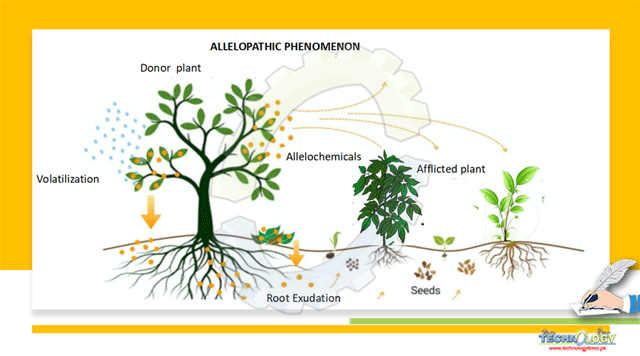Allelopathy is naturally occurring ecological process in which different organisms including plants, bacteria, viruses and fungi interact with each other through the release of secondary metabolites that impact the growth and development of other organisms in their neighborhood.

By Dr. Sardar Alam Cheema, Dr. Imran Ashraf, Dr. Shahbaz Naeem, Dr. Fahd Rasul*
This interaction between two organisms would be inhibitory or stimulatory. The plant that produces the allelochemical is known as donor plant and the plant on which these chemicals act is known as afflicted plant. Some plants inhibit the growth of other plants in their vicinity while some plants promote the growth of other plants through release of secondary metabolites. Allelochemicals are discharged into the adjacent environment through volatilization, leaching, root exudation, and decay of the plant materials. These biochemicals impact the other plants directly and indirectly in a different way. Some would alter soil microbial populations, physiochemical properties of soil, and nutrient availability which are the indirect impact of allelopathy where as some impact directly cause the physiological and biochemical changes in the afflicted plant.
Allelopathic phenomenon can be used in crop production in several ways. Growth regulators including auxins and gibberellins are impacted by allelochemicals, which considerablyimpact cell functioning in plants. Extracts of allelopathic plants would be used to promote the growth of different crops when applied at lower concentrations. Different allelopathic plants including sorghum, moringa, brassica, mulberry, sunflower, riceetc have been reported for use in growth promotion. Extracts of allelopathic plants may also be used to reduce the negative effects of heat, drought and salinity stress. When the plant extracts are used at higher concentration, these can inhibit the growth of several weeds. Extracts of sorghum, sunflower and brassica at higher concentration have been found to suppress the weeds. In addition, application of residues as a mulch is also found effective to control the weeds. Inclusion of these allelopathic crops in crop rotation would also be helpful in controlling weeds. In addition, this phenomenon would also be used to improve the nitrogen use efficiency.
In addition, allelopathy offers anatural and attractive way to reduce nitrification process for enhancing NUE in the agricultural systems. With the addition of residues of differentallelopathic crop tothe soil and exudation of allelochemicals from roots of plants would help to inhibit the process of nitrification in soil; thisprocess isrecognized as biological nitrification inhibition (BNI). The process is controlled through release of allelochemicals which decrease the Nitrobacterand Nitrosomonas activity. Release of allelochemicals in the rhizospherereduce the enzymes activities of ammonium-oxidizing bacteria which play role nitrification process. It is well known that phenolics released from plants in the rhizo-sphere can inhibit oxidation of NH4+ to NO3- by inhibiting activity of nitrifying bacteria. and this NH4+ form of nitrogen is more likely to stay in the soil than NO3-. Moreover, allelochemicals in the form of organic anions released by plant roots in the rhizosphere increase plant availability of several plant essential nutrients.
Authors: Dr. Sardar Alam Cheema, Dr. Imran Ashraf, Dr. Shahbaz Naeem, Dr. Fahd Rasul*
Department of Agronomy, University of Agriculture, Faisalabad